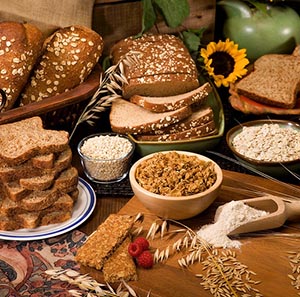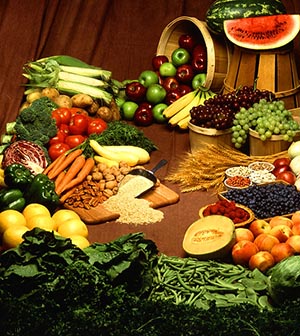Food groups in the diet
Different food groups we consume are:-
 |
| Cereals and millets. (Photo courtesy: USDAgov) |
1. Cereals and millet: Cereals and millet form the bulk of the food groups we consume and are an important source of starch (carbohydrate), fiber, minerals, and B-complex vitamins. Examples of millet are porso, pearl-millet, finger millet (ragi), etc. Cereals and millet (pseudocereals) grains contain 7-13 g% of protein and 2-6 g% of fat.
2. Pluses: Pulses (beans and lentils) are rich sources of protein (18-22 gm %). Soybean contains 42 gm% of protein and is regarded as the king of pulses. Germination of pulses improves their nutritive value, and overall bio-availability.
3. Meat group: Meat, chicken, fish and egg are also rich sources of good-quality protein, fat, minerals, and vitamins. When taken in moderate quantities, they provide required energy, essential amino acids, calcium, and heme-iron. Fish contains omega-3 poly unsaturated fatty acids which offer protection against heart and vascular diseases.
4. Nuts and oil seeds: They are an important source of visible fat among food groups. Additionally, nuts and oil-seeds are good sources of protein, minerals, and fat-soluble vitamins such as vitamin E, A, and K. Fats are concentrated sources of energy (9 calories/gm) on comparison to carbohydrates, and protein.
 |
| Fruits and vegetables. (Photo courtesy: USDAgov) |
5. Vegetables: Vegetables have drawn the attention of scientists and dieticians for their proven beneficial effect in protection from cancers and improving immunity against diseases. They provide fiber, vitamins, minerals, and phytosterols and give variety to the diet. Green leafy vegetables are rich sources of calcium, magnesium, potassium, iron, beta-carotene, vitamin B-complex, and vitamin C.
6. Fruits: Fruits are rich sources of fiber, vitamins, minerals and antioxidants. Dry fruits indeed contain a good amount of protein, iron, potassium, and magnesium. Green, yellow, and orange color fruits contain beta-carotene. Citrus fruits like lemon, orange, and berries, and guava are rich in vitamin-C.
7. Edible mushrooms: Mushrooms like buttonhead, bolete, shiitake, enoki, chanterelle, etc, despite being low in calories, carry healthy amounts of minerals like selenium, manganese, calcium, phosphorus, etc. Moreover, they carry tiny amounts of vitamin D, which is otherwise, found only in animal sources.
8. Seaweeds: Seaweeds are edible algae particularly harvested from low tide oceanic waters. Some commercially important seaweeds such as nori, kombu, wakame, dulse, etc, have been an integral part of East Asian cuisine since olden times. They are particularly rich sources protein, and minerals like iodine, manganese, iron, etc.
9. Milk and milk products: Milk and its products like cheese, yogurt, and butter are an important source of energy, protein, fat, minerals and vitamins. The fat in milk products, however, is mostly saturated and should be limited in obese and people with abnormal lipid profiles.
10. Herbs and spices: Herbs and spices make small fraction, yet indispensable food groups of our diet. These include garlic, basil, thyme, tamarind, turmeric, cloves, pepper, cardamom, chilies, nutmeg, saffron, etc. Garlic contains a high amount of selenium, which is an important co-factor anti-oxidant enzyme inside the human body.
≻≻-Back to Home page from Food groups.
Further reading and References:
U.S. Department of Agriculure-Food Safety and Inspection Service.